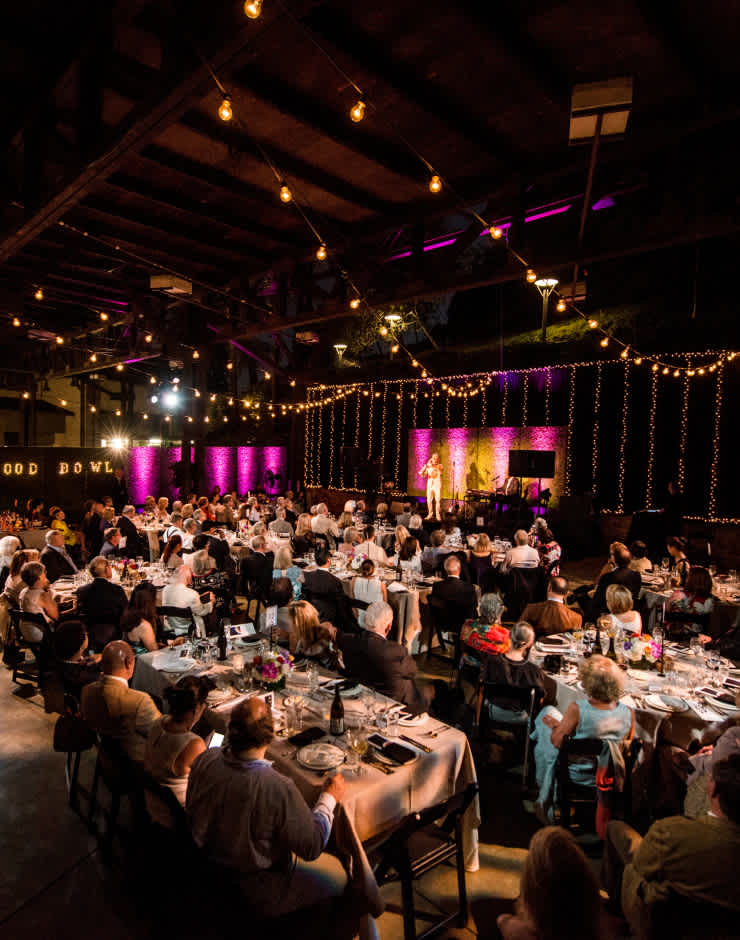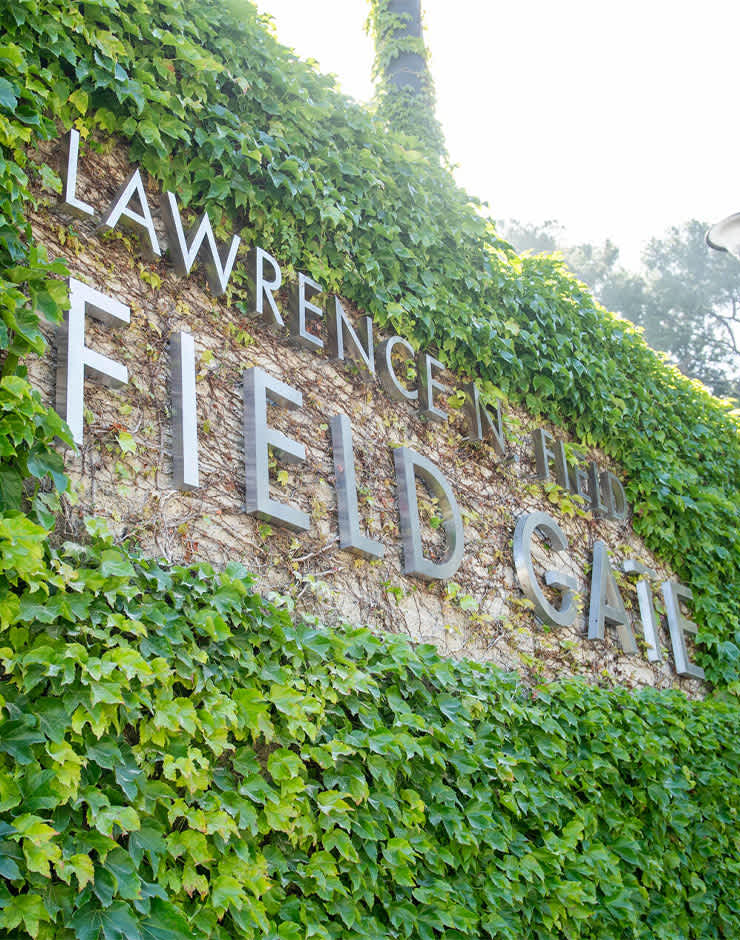The First 000 Years
Presented by
Explore Episodes
![The Marquee]()
Play Episode
Episode 1 | 9:26
MARQUEE
Seeing your name on the Hollywood Bowl marquee is one of the milestones signaling you...
![Muse of music]()
Play Episode
Episode 2 | 7:21
MUSE OF MUSIC
Born of the Great Depression and nearly lost to disrepair, the fountain complex has s...
![Episode cover]()
Play Episode
Episode 3 | 7:28
PEPPER TREE LANE
Pepper Tree Lane—the walkway that transports you to the Bowl—is named for the trees t...
![Tea Room]()
Play Episode
Episode 4 | 5:35
TEA ROOM
For decades, the Hollywood Bowl’s tea room and gardens were a gathering place as mean...
![Hollywood Bowl Shells]()
Play Episode
Episode 5 | 7:37
HOLLYWOOD BOWL SHELLS
From controversial choice to celebrated symbol, the Hollywood Bowl’s historic shells ...
![The Pool Circle]()
Play Episode
Episode 6 | 6:06
POOL CIRCLE
Of all the experiments in the Bowl design over the last century, none has inspired mo...
![SEATING AREA]()
Play Episode
Episode 7 | 8:22
SEATING AREA
Whether you prefer a box or a bench, the Hollywood Bowl experience has been a beloved...
![Backstage]()
Play Episode
Episode 8 | 7:33
BACKSTAGE
Before the current shell was installed in 2004, backstage at the Bowl was more greene...
![The Park]()
Play Episode
Episode 9 | 8:46
THE PARK
The Hollywood Bowl is an 88-acre Los Angeles County Park, filled with picturesque hid...
![]()
Play Episode
Episode 10 | 12:13
NAMED SPACES
Only a handful of truly devoted Bowl fans have been honored with a space named after ...






Bowl fans enjoying a picnic before a concert
Photo Credit
Los Angeles Philharmonic
View of picnickers from above at the Hollywood Bowl, circa 1957.
Photo Credit
Photo by Otto Rothschild Courtesy of The Music Center
Picnic overlooking the new freeways, circa 1950s.
Photo Credit
Los Angeles Philharmonic Archives
Bowl fans enjoying picturesque Picnic Area 7
Photo Credit
Los Angeles Philharmonic
Henry Jones, Frank Hoekstra Jr. and other treasure hunters use the “doodlebug” to try and find buried gold
Photo Credit
Los Angeles Philharmonic
Audience members enjoy a pre-concert picnic up on the box office terrace
Photo Credit
Timothy Norris
1/6
The Hollywood Bowl—in addition to being a beloved concert venue—is also an 88-acre County Park. In non-COVID times, it’s one of the only parks in Los Angeles that is open to the public 365 days of the year. You can find birdwatchers with binoculars, athletes running stairs, or winter tourists wanting to catch a glimpse of the world-famous venue.
About half of the Bowl’s grounds are undeveloped land. Since the very first summer in 1922, concertgoers would come early, bring blankets, find a nice grassy spot, and set up a picnic before the show. This tradition naturally evolved into the 14 designated picnic areas which are dotted across the Bowl’s campus. The best of them are nestled away— you would almost never find them if you didn’t already know they were there.
The picnic areas are the Bowl’s metaphorical hidden treasure, as opposed to its literal hidden treasure–which is a story all its own.
All 14 of the Hollywood Bowl’s picnic areas are distinct, with unique histories and different landscapes. But I think there’s two that everyone should see—
Picnic Area Number 7 is the most picturesque. You have to take both people movers all the way to the upper promenade, keep walking past the taco stand, and follow a spiral pathway to get there. Once you’ve reached the summit, you are greeted by a panoramic view of Los Angeles. On a clear day, you can see all the way to the harbor in San Pedro. The Astroturf under your feet contrasts with the large magnolia and palm trees that provide shade in the hours before a concert. But if you want to snag a seat at one of the picnic tables, you’ll have to get there early — Picnic Area #7 is a hot commodity.
Picnic Area #8, on the other hand, is less trafficked. It’s in a part of the Bowl you might not even know is there. If you drive into the Bowl’s Main Entrance driveway, leading into Lot A, and you just keep driving up the hill, eventually you’ll reach the Upper Terrace. If you’re walking there, from the Field Gate, where the valet parking drop-off is, you head west to the moving walkway that will take you up to a flat area that contains overflow parking and a maintenance yard. Off to the side, you’ll see a set of concrete stairs that lead to the lower level of Picnic Area #8. From there, you can take a curved, unpaved pathway around the hillside, to a mid-level landing. This is my favorite spot. You’ll see a multi-tiered stone fountain or grotto. Palm trees and tropical plants in cylindrical wood planters. The whole area has a Polynesian feel. This little area is enclosed by a low wooden retaining wall, that if you look carefully, you can see is made from planks of old Hollywood Bowl benches. They must be the oldest surviving benches on the property.
The most mysterious thing about Picnic Area #8 is that no one knows who built it or even when it was built. Most of the picnic areas were installed in the mid-1950s but, in a 1960 site plan, Picnic Area #8 is noticeably absent. Based on its similarity to other features built at the time, we can guess it was installed in the early 1970s, but we’ll never know for sure. My theory: whoever built this little Bowl oasis, wanted to keep it for themselves.
Around the Bowl’s campus, you’ll see various placards with Bowl history and lore. One of them is dedicated to the search for a cursed crock of gold, believed to have been buried on the Bowl’s grounds sometime in the middle of the 19th century.
When I first read that placard, I thought this was an absolutely amazing story. Then I started researching Los Angeles history, and I came to find out that basically every landmark in California has its own myth of buried treasure.
The Bowl’s buried treasure myth is unique only in its specificity and its gruesomeness. In 1858, during the Mexican War of Reformation, Benito Juarez sent $200,000 worth of treasure north to San Francisco to buy guns and ammunition. The story of the treasure from there is way too long to get into, but it involves French spies, a duel that ends in double murder, and a sheepherder who steals the treasure and buries it on the site of what would later become the Hollywood Bowl, before dying himself of a mysterious ailment.
What I just told you? That entire saga was pure fiction. But this part of the story is 100% true.
In 1939, an amateur archeologist named Henry Jones convinced the County Board of Supervisors that he had discovered the definitive location of the buried treasure. He said it was underneath what is now the Bowl’s Parking Lot B. Jones teamed up with an inventor and scientist named Frank Hoekstra, Jr. who had developed a highly sensitive metal detector, which he dubbed “the doodlebug.” Jones promised the Supervisors that the doodlebug would allow him to pinpoint the Mexican gold in a matter of days.
Jones, Hoekstra, and an aging vaudevillian actor named Ray Johnson, started digging on November 27, 1939. Three film crews, CBS radio, and a slew of reporters came by along with hundreds of curious onlookers. A carnival-like atmosphere developed, no doubt egged on by the actor. An upstart vendor sold popcorn. Each time the animated needle on Hoekstra's 'electrochemical recorder' moved, the crowd went wild. After 24 days of shoveling more than 100 tons of earth to create a huge 9x42 foot pit, they hit a boulder and called their hunt finished.
The whole thing was a PR stunt. Jones was a charlatan trying to make a name for himself and took the County Supervisors for fools. The Bowl’s managers at the time knew better. William “Dad” Reed who had helped discover the Bowl site in 1919 and had been the manager of the Bowl’s grounds for 20 years, told the LA Times “the only thing they’re gonna dig up is dirt.”
Whether you’re searching for buried gold bullion or just a place to eat a PB&J, the Hollywood Bowl is a magical place for a treasure hunt. In my research over the last five years, I’ve found a number of treasures— in a spider-filled closet in the lower-level of the Hollywood Bowl Museum, I came across this giant leather-bound book called the “Great Register of Permanent Patrons.” Dated 1928, it contains the names of people who committed to becoming lifetime subscribers to the Bowl. Turning through the brittle pages, you see names like Douglas Fairbanks and Charlie Chaplin in between the names of thousands of Bowl fans from all across Southern California. These are the music lovers who carried picnic baskets along the same pathways we walk today; who ate their sandwiches under the shade of the same trees. The Hollywood Bowl itself is the treasure, handed down to us by previous generations of Angelenos. And you definitely don’t need a doodlebug to find it.

0:00
0:00









